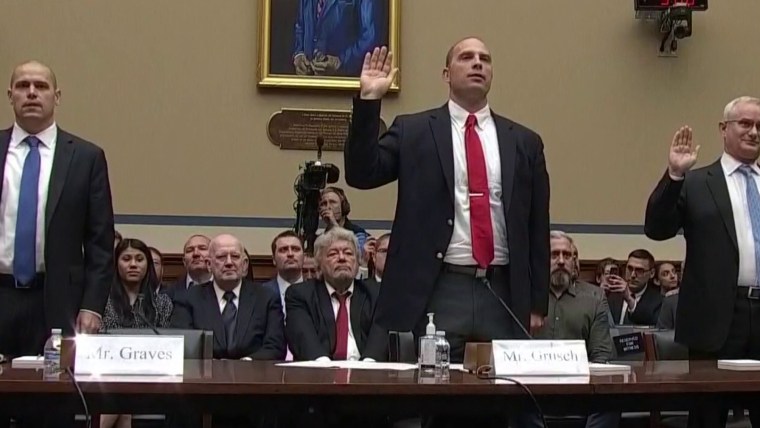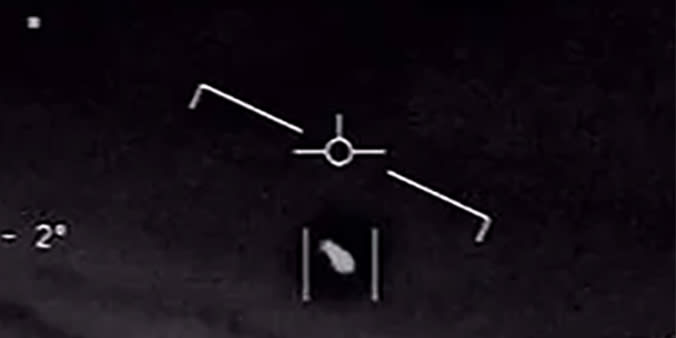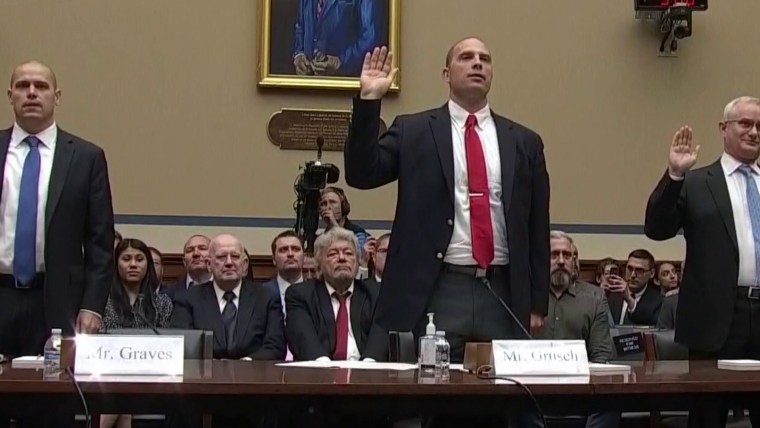The Defense Department on Thursday unveiled a website that’s intended to serve as a clearinghouse for declassified information on unidentified aerial phenomena.
The site is being billed as a “one-stop shop” for publicly available records on UFOs, and is expected to shed light on the work of an office created by Congress last year that coordinates efforts across federal agencies in detecting and identifying what the Pentagon officially refers to as unidentified anomalous phenomena, or UAPs.
“The posting of the website is the next step in this process, in terms of ensuring that the public has information and insight into UAPs,” said Pentagon Press Secretary Brig. Gen. Pat Ryder in a news conference Thursday. “And so what you see today is what has been declassified to date.”
For now, the site includes just a handful of videos, some labeled “unresolved” or “unclassified,” with short descriptions offering explanations of assessments by the All-domain Anomaly Resolution Office, which was established last year by the National Defense Authorization Act. It also includes sections labeled “Coming Soon.”
The website will house photos and videos on resolved UAP cases as they are declassified and approved for public release, the Pentagon said in a news release. It will also feature links to reports, transcripts and other resources like aircraft, balloon and satellite tracking sites.
The Pentagon also plans to update the website to include a tool allowing current and former U.S. government employees, service members and contractors to “provide reports via a private and secure means,” Ryder said. That update is expected in the fall and a tool for the public to file similar reports will also be announced “in coming months,” according to the news release.
“The department is committed to transparency with the American people on AARO’s work on UAPs,” Ryder said, adding that the office reviews the facts and, “when possible,” declassifies that information to make it publicly available.
NBC News reached out to the Pentagon for comment Thursday night on the anticipated frequency of updates to the website.
The website launch comes amid growing demands from Congress for greater transparency around UAPs.
Last month, a former U.S. intelligence official who once led Defense Department efforts to analyze reported UAP sightings, told a House Oversight subcommittee that he was informed about a “multidecade” Pentagon program that aimed to collect and reassemble damaged UAPs. In his testimony, David Grusch accused the government of covering up the program and claimed that “non-human biologics” had been found amid the rubble of crashed UAPs.
Asked about Grusch’s claims, a Pentagon spokesperson last month said the Defense Department “has not discovered any verifiable information to substantiate claims that any programs regarding the possession or reverse-engineering of extraterrestrial materials have existed in the past or exist currently.”
The Office of the Director of National Intelligence released an unclassified report in January that said the Defense Department had received 366 new reports of UAPs since March 2021. The report said that a preliminary analysis suggested that about half appeared to be balloons or drones, but noted that “initial characterization does not mean positively resolved or unidentified.”
The intelligence agency released its first report on UFOs in 2021, which reviewed 144 reported cases.
Source: | This article originally belongs to Nbcnews.com











